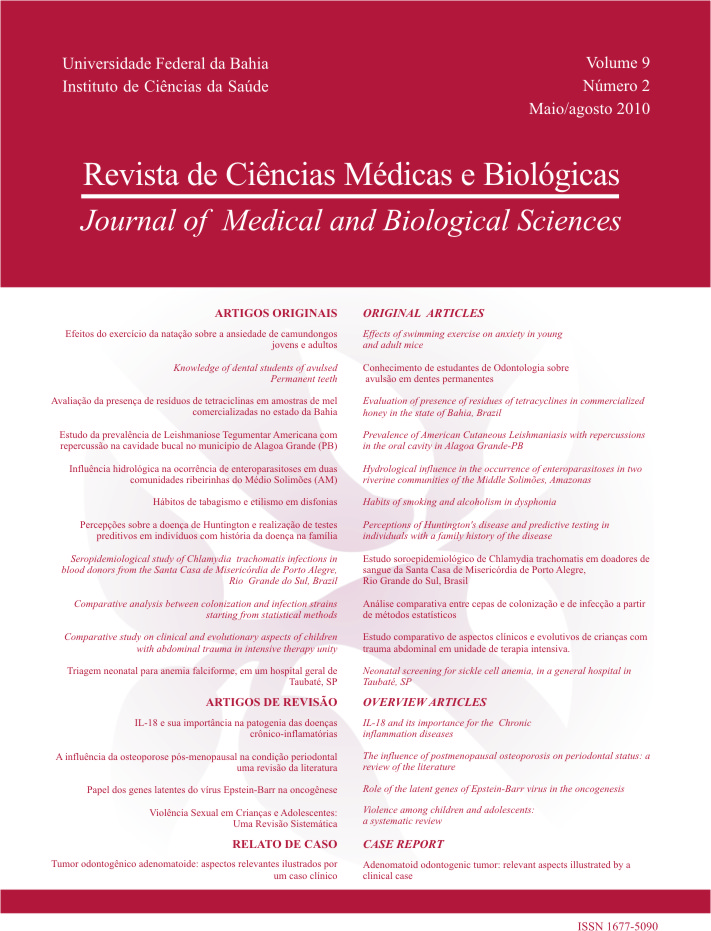Perceptions of Huntington's disease and predictive testing in individuals with a family history of the disease
DOI:
https://doi.org/10.9771/cmbio.v9i2.4944Keywords:
Huntington's disease- Predictive testing- Emotional consequences.Abstract
Huntington's disease (HD) is an inherited neurodegenerative disorder characterized by movement disorders, psychiatric disorders and dementia. It is a disorder of gene amplification associated with a CAG expansion in exon 1 of the gene IT-15, located at 4p16.3, which encodes the protein huntingtin. This study aimed to analyze the perceptions of individuals at risk for Huntington's disease predictive testing and about the emotional consequences of their implementation. The research was developed with members of ABH, using as a research tool semi-structured questionnaire, sent by the association by electronic mail. The data analysis revealed a greater representation of members of the South and Southeast; only 6% of responses were from individuals in the North and Northeast. The age of respondents was between 17 and 55 years and females accounted for 75% of the information. The vast majority (79%) had more than one affected by the disease in the family. Predictive tests were performed only by 2 individuals, one of which was not get the test results. In the opinion of members, despair and sadness are the feelings most often associated with the implementation of a predictive test. Percent minority (6%) expressed attitudes of hopefulness about the possibilities of treatment as a result of technological advances. It is concluded that the lack of prospects in the short term is the main barrier to the achievement of predictive testing.Downloads
Download data is not yet available.
Downloads
Published
2010-01-01
How to Cite
Bittencourt, A., Lima, R. L. L. F. de, & Moreira, L. M. de A. (2010). Perceptions of Huntington’s disease and predictive testing in individuals with a family history of the disease. Journal of Medical and Biological Sciences, 9(2), 126–129. https://doi.org/10.9771/cmbio.v9i2.4944
Issue
Section
ORIGINAL ARTICLES
License
The Journal of Medical and Biological Sciences reserves all copyrights of published works, including translations, allowing, however, their subsequent reproduction as transcription, with proper citation of source, through the Creative Commons license. The periodical has free and free access.


